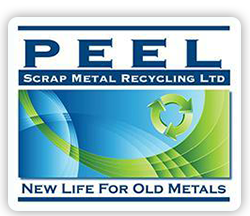On the Natural Resources Canada Website, the government points out that in this country it is estimated that 15 million tons of non-ferrous and ferrous metal scrap are recycled Important each year.
In the U. S., ISRI (the Institute of Scrap Recycling Industries) states that in the U.S. enough ferrous scrap is recycled that if put in rail cars, it would stretch in a line for 11,349 miles or halfway around the planet. In addition, about 6.6 million tons of non-ferrous scrap were recovered in 2007 – about $38 billion worth. So you can just imagine the enormous scale and potential of our industry on a global basis.
Some Important Facts About Metal Recycling
Here are a few facts along these lines that we have pulled together. We think you might find them interesting. scrap yard
• 42% of crude steel is made from recycled material. By using a ton of recycled steel rather than primary iron ore carbon emissions are reduced by 2.1 tons. Scrap Yard Brampton
• Recycling aluminum uses 95% less energy than producing aluminum from raw material. When one ton of aluminum is recycled, carbon emissions are reduced by 7.9 tons and the energy saved is more than enough to power a household for a year. Scrap Yard Etobicoke
• A used aluminum beverage container can be recycled and be back on the shelf in 60 days. The recycling of that one can save enough energy to power a 100-watt bulb for about four hours. Scrap Yard in Burlington
• Every three months Americans discard enough aluminum to completely rebuild every commercial airplane in the U. S. In 2004, Americans recycled enough aluminum to build thirteen aircraft carriers.
• It takes about 400 years for aluminum to break down naturally. In 1996, aluminum manufacturers saved enough money by recycling aluminum to power a city the size of Pittsburgh for six years.
• The Hershey Company in the U. S. produces about 20 million kisses each day using 133 square miles of recyclable aluminum to wrap them in.
• Recycling copper saves 85% of the energy used in primary production. Historically, the value of premium grades of recycled copper is about 95% of the value of the metal from newly mined ore. About 40% of the world’s demand for copper is met using recycled material. By using copper scrap we reduce CO2 emissions by 65%.
• One ounce (approx 28.3 grams) of mercury will contaminate a lake for centuries. One hundred fluorescent lamps contain 4 grams of mercury.
 The Crux Of The Recycling Issue
The Crux Of The Recycling Issue
The amount of available information like this is endless simply because the central question of recycling is a very serious one. It focuses on the problem of increasingly competing demands on increasingly diminishing resources. It addresses the issues of sustainability, costs, and environmental concerns. Important These are hugely important issues that are not going to go away on their own and if left unattended will become insurmountable problems for future generations.
We Can & Should All Make A Difference
A recently commissioned study by a large electronics recycling company in the U. S. concluded that many businesses are looking for affordable and flexible options when it comes to recycling. Important So too are governments through their stewardship and legislative programs. And so too is the public at large.
There Is No Downside To Good Recycling Practices.
As the facts above suggest, Important within our own scope we in the scrap metal industry, have a sizable role to play.
We can make a difference. But we need a commitment from all stakeholders. The public needs to stay informed. Governments should be both alarmed and engaged far beyond the business of picking winners to be sponsored in their recycling programs. Important And industry must continue to innovate with recycling solutions and sound environmental practices in mind.
